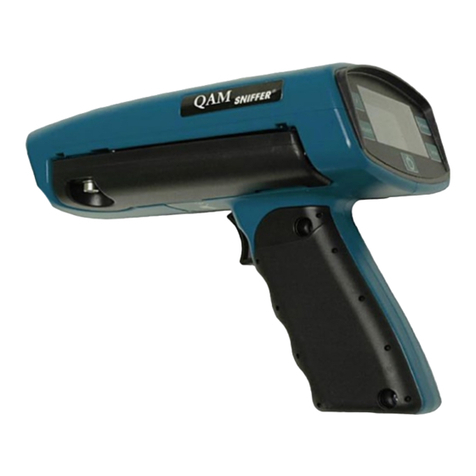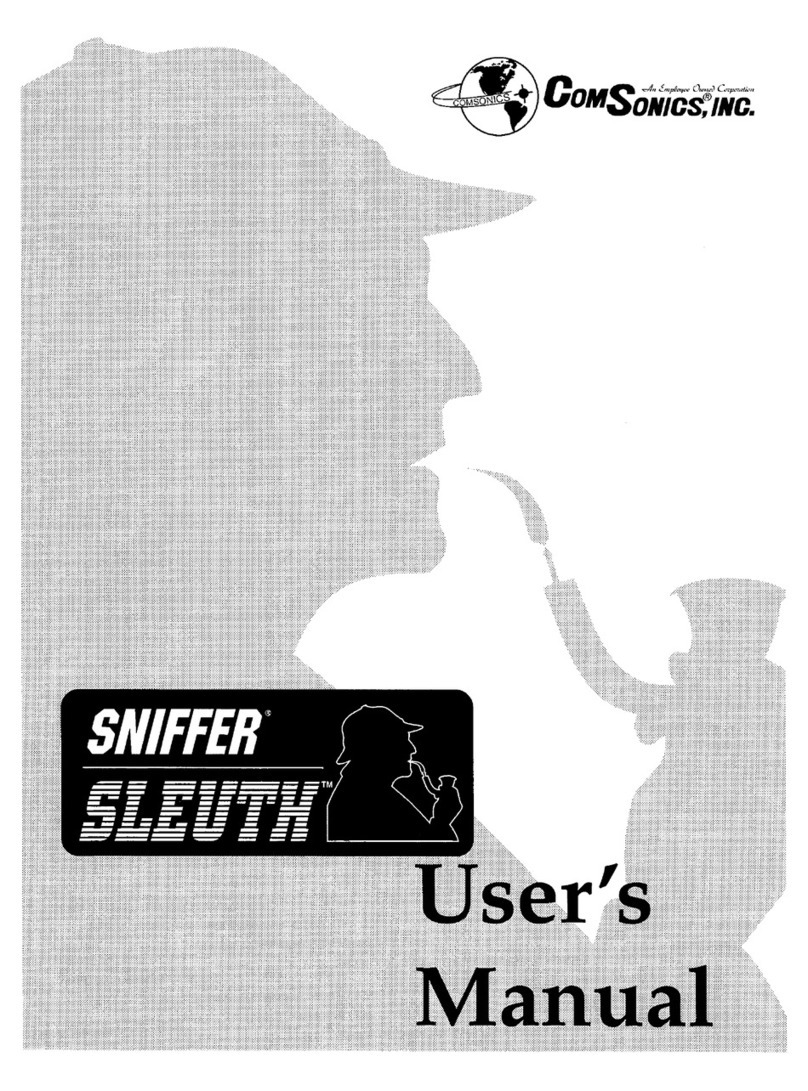
www.comsonics.com1·800·336·9681
2
Congratulations on the purchase of your new StickStick Pathfinder Locator. The StickStick Locator is specially
designed to detect buried utilities. This device may detect buried power cables, CATV cables, gas
and water pipes, sewer lines, telephone cables, fiber optic cables with sheath, sondes, inspection
camera transmitters.
The TRANSMITTER emitts a signal. The RECEIVER detects the signal. You can locate the rel-ative
position of the buried utility, sonde or camera by following the tracing signal.
INTRODUCTIONINTRODUCTION
PART NUMBERSPART NUMBERS
PREPARE FOR USEPREPARE FOR USE
STICK Cable, Pipe Locator KIT........................001 00850 00
Stick Receiver...........................................................100 00851 00
Stick Transmitter....................................................100 00852 00
Red/Black Cord ......................................................151 00078 00
Ground Rod ..............................................................211 00032 00
Unpack your new StickStick Pathfinder Cable & Pipe Locator . Make sure there is no shipping damage and
all the parts are included.
Locate the battery compartment on the top of the RECEIVER. Open the com-partment by uncrewing
the gray cap. Install the six Duracell® “AA” batteries as marked.
Locate the battery compartment inside the TRANSMITTER. Open the compart-ment using a phillips
screwdriver. Install the eight Duracell “C” batteries as marked.
Note: For longer battery life and reliable operation under adverse conditions, use only Duracell®
alkaline batteries.
Electric shock hazard:Electric shock hazard:
• Tool is designed to detect electromagnetic field emitted from Camera
• Sondes and buried metallic utilities. There are buried cables, pipes, andThere are buried cables, pipes, and
utilities this instrument CANNOT detect.utilities this instrument CANNOT detect.
• LOCATING is not an exact science. The only certain way to be sure ofThe only certain way to be sure of
the ex-istence, location, or depth of buried utilities is to carefully exposethe ex-istence, location, or depth of buried utilities is to carefully expose
(dig up) the utility.(dig up) the utility.
•• De-energize any circuits in or around the work area.De-energize any circuits in or around the work area.
• Do not expose tool to rain or moisture.
• Use tool only for intended purpose as described in this manual
•• Failure to observe these warnings could result in severe injury or death.Failure to observe these warnings could result in severe injury or death.
WARNING!





























